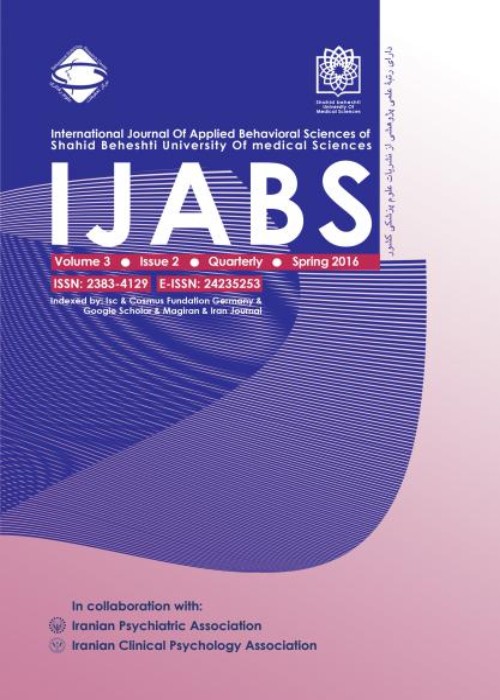Studying the flourishing of Iranian students based on Seligman model and its comparison based on demographic variables
Author(s):
Abstract:
Introduction
The basic objective of this paper was to study the flourishing of Iranian students based on Seligman model and its comparison based on demographic variables.Methods
400 subjects of all students enrolled in the second semester of academic year of 2014-2015 in Ferdowsi University of Mashhad were randomly classified and studied as the sample group. Flourishing questionnaire was used to test the hypotheses. The flourishing questionnaire includes four components of positive emotions, relationships, meaning and achievement. To analyze the research data, the followings were used: percentage, mean, system dynamics (SD), multivariate analysis of variance, univariate analysis of variance and post hoc least significant difference (LSD) test.Results
Descriptive results showed that 5% of students are at wilting point; 30% have relative mental health and 65% are at flourishing state. The highest percentage of flourishing students was in the meaning component (72.5%), while the lowest percentage of them was found in the positive emotions component (59.75%). The results of MANOVA test and follow-up tests also showed that the flourishing rate of the students is not affected by father's education, mother's education, father's occupation, mother's occupation, school and residence of the students (native or non-native); however, the flourishing rate of the students in the relationships component was significantly different with regard to the gender and education of the students; This means that the female students compared to the male students, and master and PhD students compared to the undergraduate students had earned higher scores in the relationships component.Conclusion
At the end, according to the results of the present study, it is suggested to develop a unique intervention program to promote and foster flourishing of the students, while considering gender and educational differences in the relationships component.Declaration of Interest: None.Keywords:
Language:
English
Published:
International Journal of Applied Behavioral Sciences, Volume:2 Issue: 2, Spring 2015
Pages:
21 to 28
magiran.com/p1493602
دانلود و مطالعه متن این مقاله با یکی از روشهای زیر امکان پذیر است:
اشتراک شخصی
با عضویت و پرداخت آنلاین حق اشتراک یکساله به مبلغ 1,390,000ريال میتوانید 70 عنوان مطلب دانلود کنید!
اشتراک سازمانی
به کتابخانه دانشگاه یا محل کار خود پیشنهاد کنید تا اشتراک سازمانی این پایگاه را برای دسترسی نامحدود همه کاربران به متن مطالب تهیه نمایند!
توجه!
- حق عضویت دریافتی صرف حمایت از نشریات عضو و نگهداری، تکمیل و توسعه مگیران میشود.
- پرداخت حق اشتراک و دانلود مقالات اجازه بازنشر آن در سایر رسانههای چاپی و دیجیتال را به کاربر نمیدهد.
In order to view content subscription is required
Personal subscription
Subscribe magiran.com for 70 € euros via PayPal and download 70 articles during a year.
Organization subscription
Please contact us to subscribe your university or library for unlimited access!


